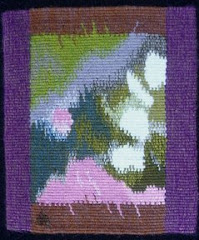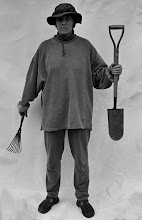Birrell, Verla. The Textile Arts: a Handbook of Weaving, Braiding, Printing, and Other Textile Techniques. New York, Schocken, 1973 (Paperback Edition). It was first published in hardcover by Harper, 1959, with a different subtitle.
This is an unassuming book, about 9 inches tall, with black and white photos, 513 pages including index, bibliography and glossary.
 It includes chapters on: History of Weaving, Fibers and Yarns, Simple Looms and Their Uses, Belt Looms and Belt Weaves, Rug Looms and Rug-Making Techniques, Mechanically Operated Looms, Basic Weaves, Nonwoven Fabrics, Embroidery and Needlework, Dyes and Dyeing Processes, Textile Painting and Textile Stamping and Printing.
It includes chapters on: History of Weaving, Fibers and Yarns, Simple Looms and Their Uses, Belt Looms and Belt Weaves, Rug Looms and Rug-Making Techniques, Mechanically Operated Looms, Basic Weaves, Nonwoven Fabrics, Embroidery and Needlework, Dyes and Dyeing Processes, Textile Painting and Textile Stamping and Printing.When I was a Fibers major at the Massachusetts College of Art in the early 1970s, this book was required for a class. I was completely enchanted, and my goal became to learn every textile technique in the book, thus making myself an indispensable fountain of knowledge. I did learn many of the techniques, because this book includes brief but accurate diagrams of how to do Knotless Needle Netting (one of my favorites), various pile knots, Sprang, Lace Weaving and much more.
Looking at the page on Overshot patterns, I see that the example is “Honeysuckle,” the pattern I used for placemats, back in 70s when I was weaving things to sell.
There are 17 pages on tapestry weaving, including photographs of a 15th Century Chinese Ming Dynasty tapestry, Peruvian, German, French, and modern tapestries. There is also a photo of Jan Yoors and weavers in his New York studio.
I got all of this for only $7.95! Amazon lists the hardcover edition, used, from $4.00 to $92.50.








